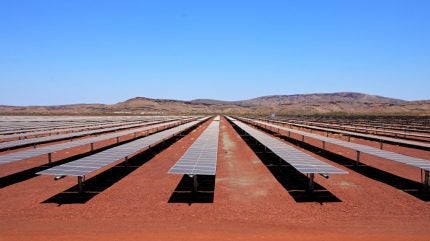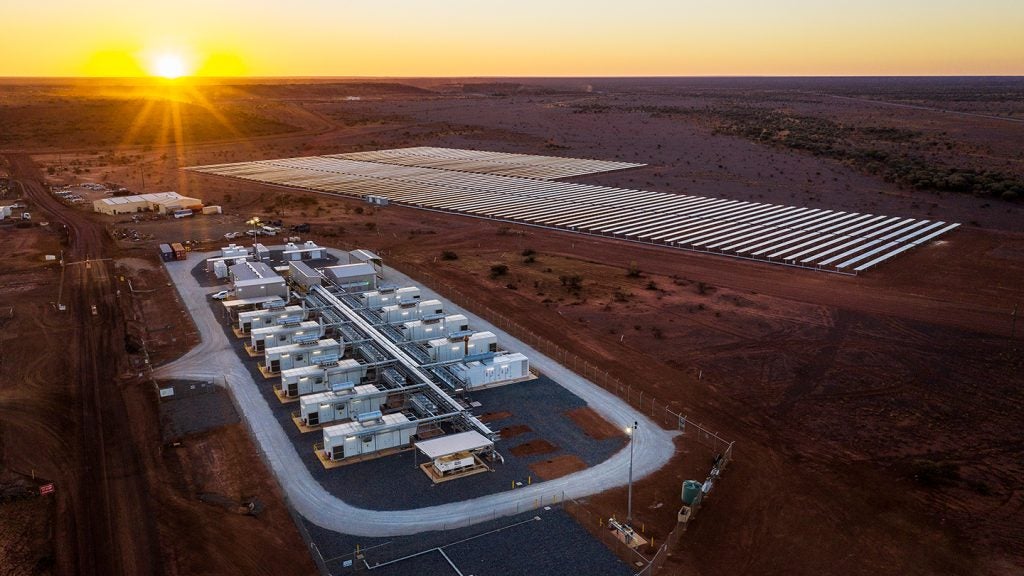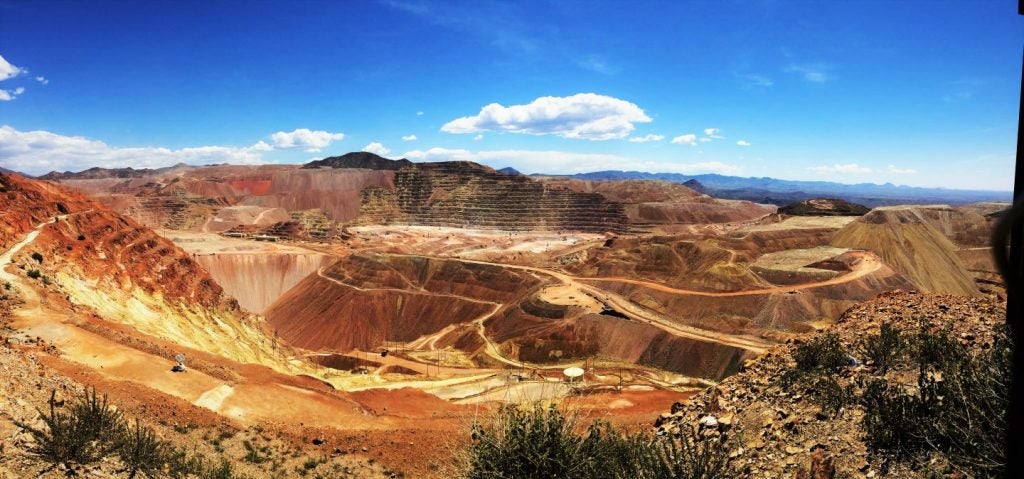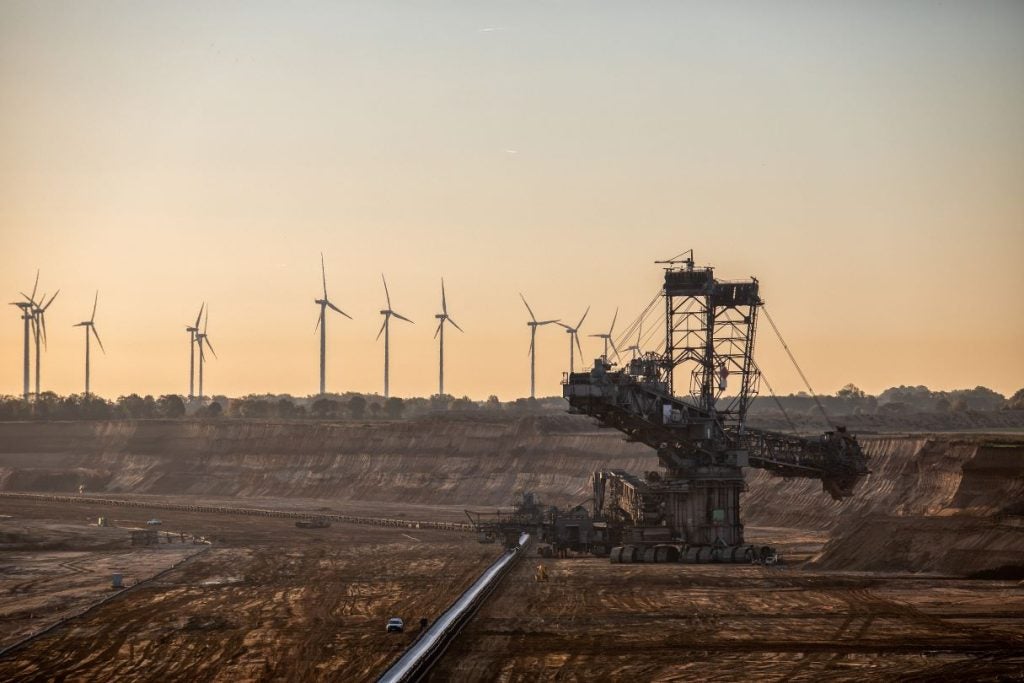
For mining companies, energy consumption is a major expense, comprising approximately 30% of total cash operating costs. Standard practice is for mine site operators to seek convenient power purchase agreements (PPAs) with local utilities, but a trend is emerging towards miners investing in decentralised on-site power supply.
GlobalData has collected information for around 3,000 mine sites – there are around 10,000 globally – and found that just under half (1,250) have invested in on-site power infrastructure. Many are in Australia, where huge land mass and limited access to the grid make on-site power attractive and necessary. However, mines in other regions are also investing in on-site power supplies due to other factors: namely, decarbonisation and affordability.
On-site renewables and emissions reduction
At present, nine of the top ten publicly listed mining companies have set scope 1 and 2 net-zero goals for 2050, with reduction ambitions to meet in the interim. BHP, for example, wants to reduce scope 1 and 2 emissions by at least 30% by 2030 from a 2020 baseline.
“When it comes to reducing their emissions, mining companies have really only got a couple of levers to pull – one is shifting to renewable power,” says David Kurtz, director of mining & construction at GlobalData.
The data shows that miners are investing in natural gas, as opposed to diesel or other heavy fuel, and in renewables, which are becoming increasingly affordable. For example, the cost of solar power has dropped by nearly 90% over the last decade and the cost of batteries is also steadily falling.
“Our data doesn’t cover the whole market, but it gives an indication that new on-site power under development on mines is much more weighted towards natural gas and solar power,” says Kurtz.
“For existing mines that have been running for years, they are much more likely use diesel or other fossil fuels, but as the cost of renewables such as solar and batteries comes down and becomes more reliable it is a more feasible option for sites,” he adds.
Ramping up investment in on-site power
There is a shift more broadly towards renewable energy within the mining industry.
Eric Saderholm, formerly Newmont Mining’s exploration manager for the Western US and now managing director of exploration for American Pacific Mining, says on-site power investment is ramping up, driven by both the bottom-line cost and environmental responsibility.

“Australia’s way ahead of the curve when it comes to renewables and self-sustaining, but there are other places such as the Andes and areas of the US really stepping up,” he says.
He points to Barrick’s Nevada Gold Mines (NGM), which has invested in a 200MW solar power plant system in partnership with First Solar, which manufactured the modules.
“This makes sense in Nevada because mines here will likely have a 50-year lifespan, so can absorb their capex expenses down the road, but there is also 300 days a year of solar energy, clear skies; it is almost a no brainer,” he says.
NGM will also convert its coal-fired power plant to natural gas to meet its commitment to reduce carbon emissions by 20% by 2025.
Europe and US follow Australia as leaders in on-site power at mine sites
Schneider Electric, which specialises in digital automation and energy management, has evaluated more than 100 mining micro-grid and power investments across the globe. It says, beyond Australia, Europe leads in investments, accounting for approximately 25% of global investments in on-site power generation for mining.
“This is driven by increasingly stringent environmental regulations and ambitious climate goals, as well as advantageous topography, with significant projects in countries like Sweden and Finland focusing on wind and hydroelectric power,” explains Bas Mutsaers, global strategy, technology and marketing lead at the company.
The US follows closely with roughly 20% of global investment, with particular emphasis on solar power projects in sun-rich states such as Nevada and Arizona. Regions such as Chile and South Africa, Canada, Mexico and India also stand out, according to the company.
US funding for on-site power at mines
Notably, the US government has an ongoing programme to demonstrate the feasibility of on-site power at mine sites. In March, the Office of Clean Energy Demonstrations (OCED) announced a $475m investment in five projects on either current or former mine sites that will demonstrate on-site clean energy as part of President Biden’s Investing in America agenda.

They include the Freeport Minerals Corporation (FMC) operations in Moreni and Safford complexes, which has four active mines. Here the company wants to demonstrate the installation of a microgrid that will include a BESS and geothermal clean heat, with FMC investing in the exploration and development of an on-site geothermal source.
The hope is it will decrease the mines’ reliance on on-site thermal backup generators, reduce greenhouse gas emissions, and improve the energy and climate resilience of local communities. It also aims to demonstrate a way to use naturally occurring geothermal heat to increase copper yields from already mined material.
Cost is the bottom line
Reliability and security are clearly emerging as other drivers for mine investment in on-site power.
“For industries such as mining, uninterrupted power is crucial to maintain operations and avoid costly downtime,” says Mutsaers. “For example, mining companies that operate in remote areas often face unreliable grid connections, which leads them to invest in on-site power solutions to ensure continuous operation.”

There are also financial benefits around energy independence when expanding mine site volumes for growth, he adds.
“The existing power nomination and contract might, at times, prevent expansion. On-site power generation can help companies mitigate rising energy costs or contractual limits and reduce exposure to price volatility in energy markets,” says Mutsaers.
However, most agree the decision to invest in on-site power will largely be dictated by the bottom line – “at the end of things, you want to provide your investors with a return”, says Saderholm.
“However, if the bottom line of profit indicates that you should go totally renewable, or at least partially renewable, I think mining companies will make the right decision,” he adds.
Challenges of adopting on-site power
The cost advantage of solar-diesel hybrid solutions has been widening over pure fossil fuels-based systems. However, although decentralised on-site power is technically well established – experts say it’s possible to achieve 70–90% of energy supplied from renewables with a combination of wind and solar – there are challenges and implementation can be capital intensive.
This makes it difficult for miners outside of major companies to establish their own power system network without the support of external expertise.

Indeed, Mutsaers says a major challenge is the technical complexity of integrating on-site power generation systems with existing mining operations.
“For instance, the installation of renewable energy sources such as solar or wind power requires specific expertise, careful planning and engineering to ensure reliable and continuous power supply, given the variable nature of these energy sources,” he says.
“The integration of hybrid systems, combining renewable energy with traditional diesel generators for baseload power or backup power scenarios, can further complicate the setup, necessitating advanced power and process control systems to manage the energy mix effectively without affecting the integrated planning of the site.”
Other barriers include access to land – large solar and wind farms need a lot of space – environmental impact, initial costs, energy density, and efficient, good-value storage to manage intermittency.
However, Saderholm believes that all companies that are investing in the future of their projects need to evaluate, initially, a hybrid system of diesel and solar and wind, or go entirely with solar and wind, if feasible.
“It is a transition that will take 20 years industry-wide due to the 24/7 and cost-driven nature of the mining industry – it has to be sequential and it has to be sustainable.”



